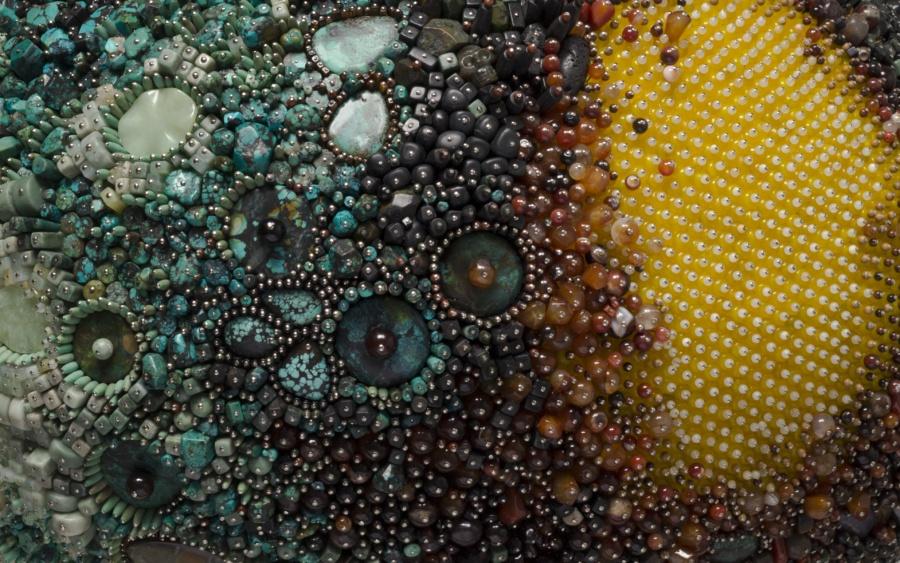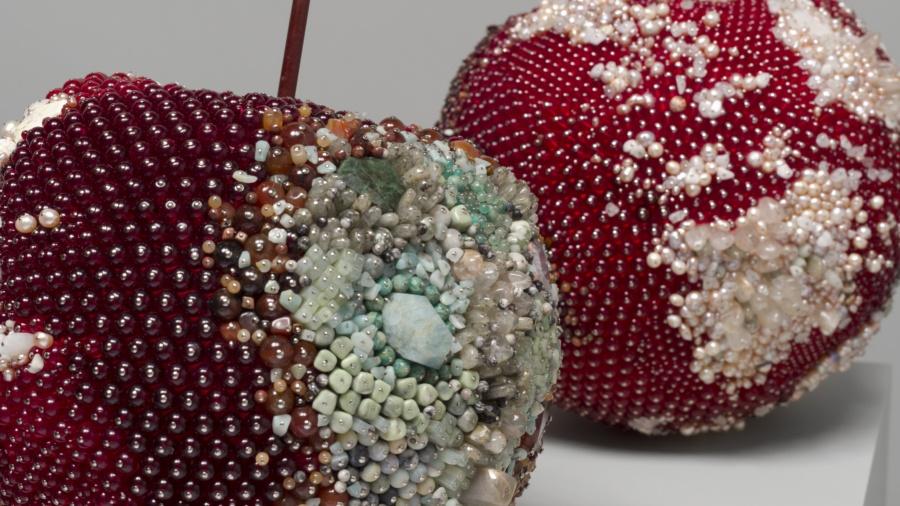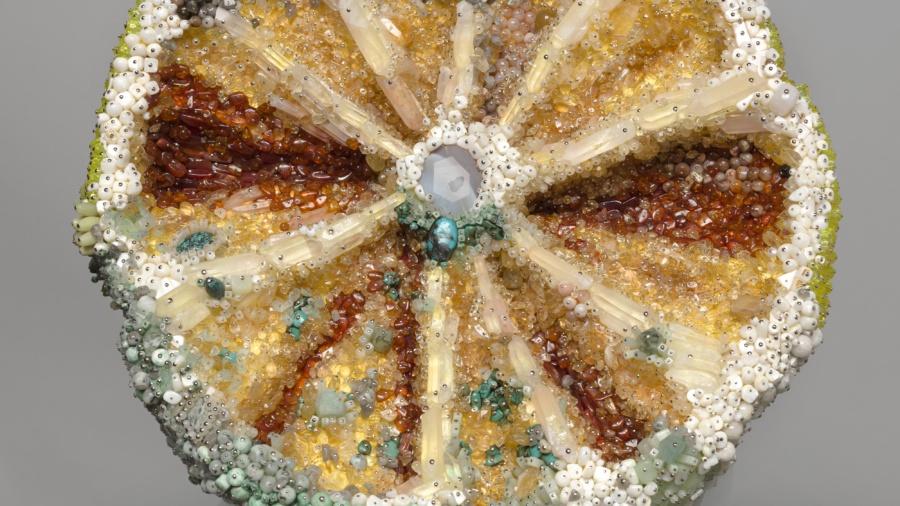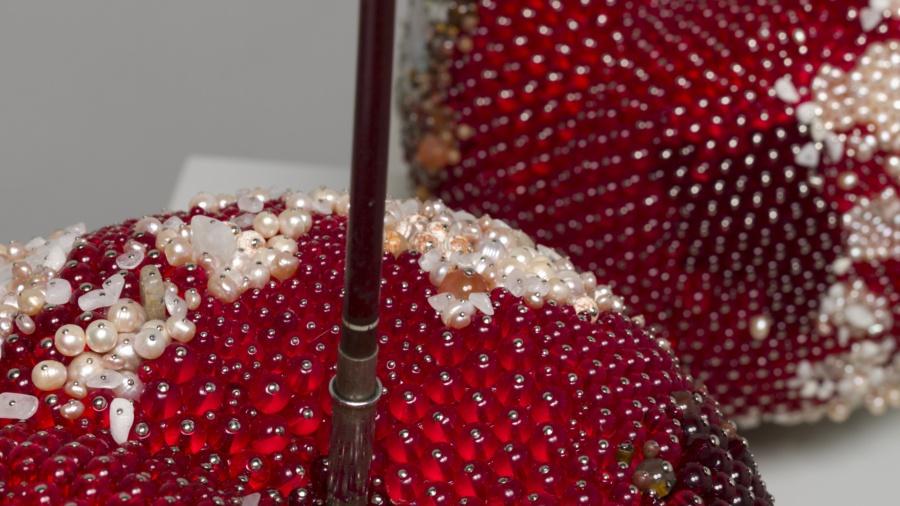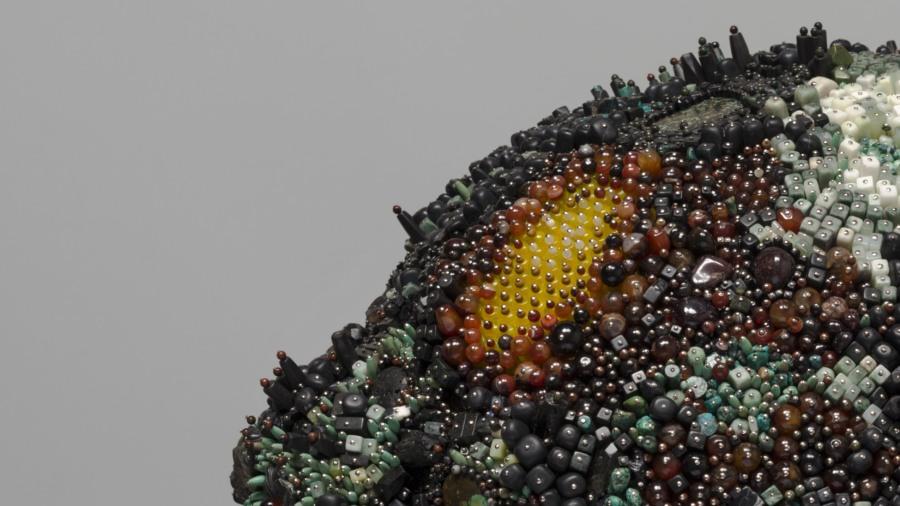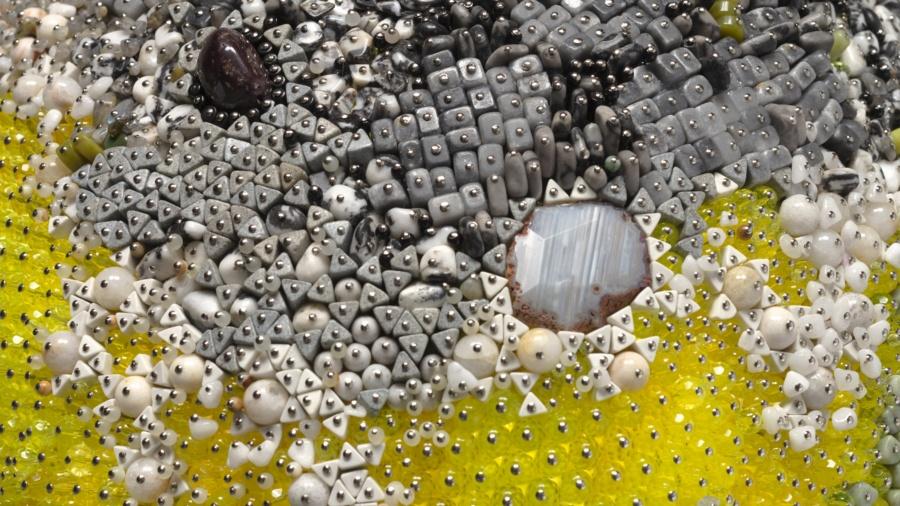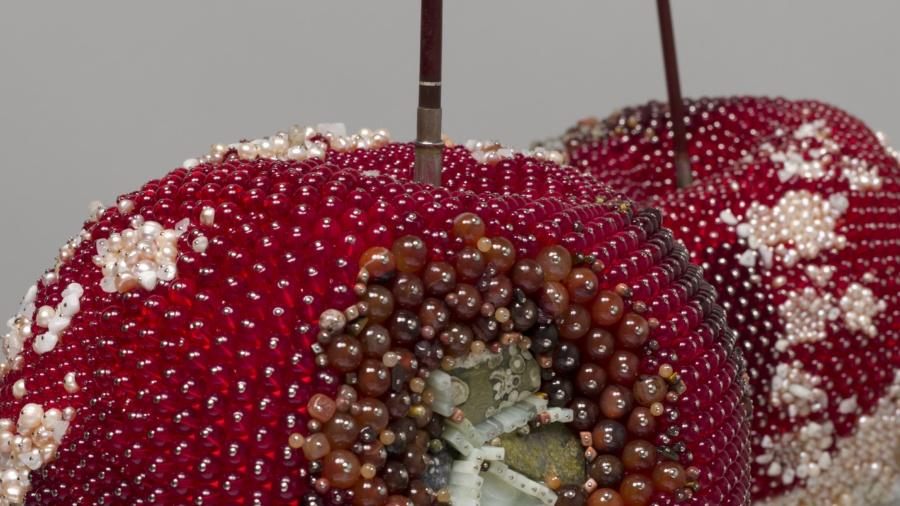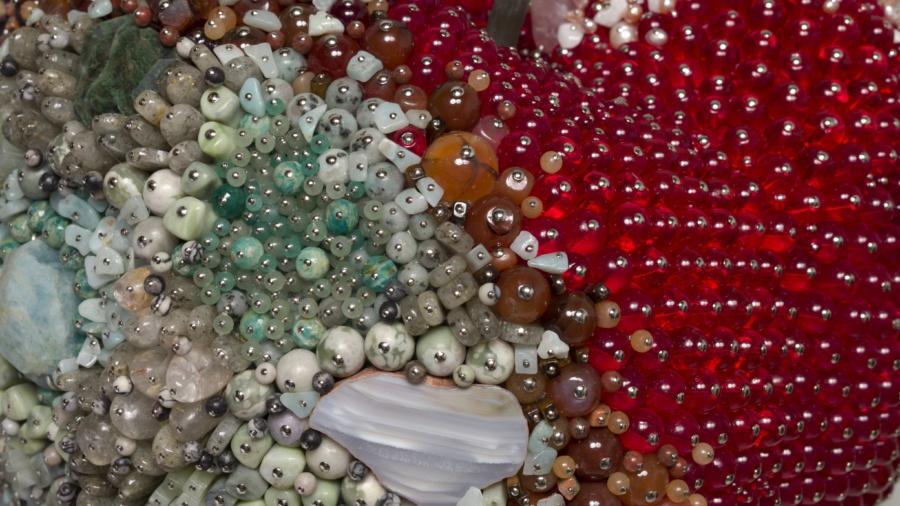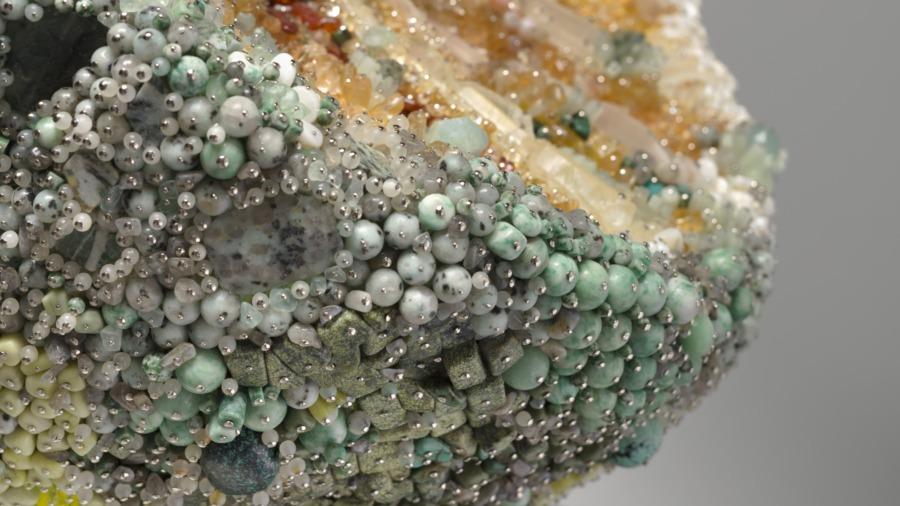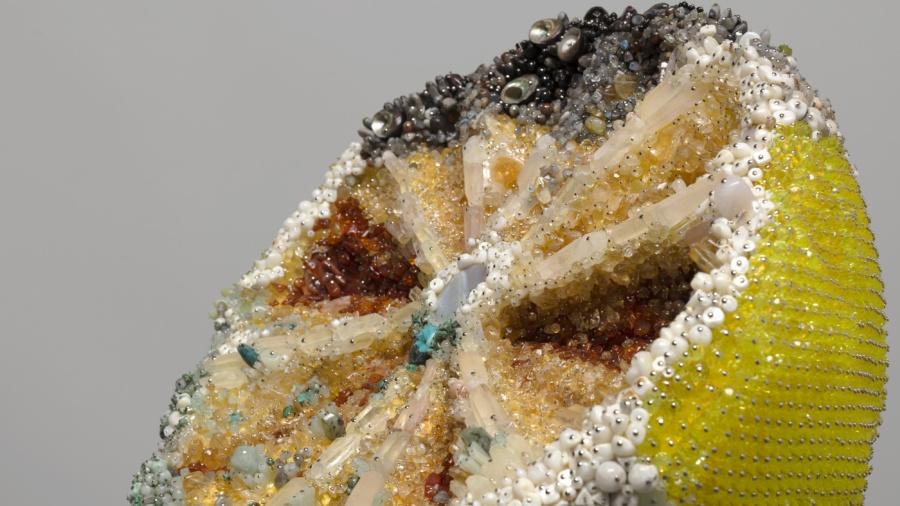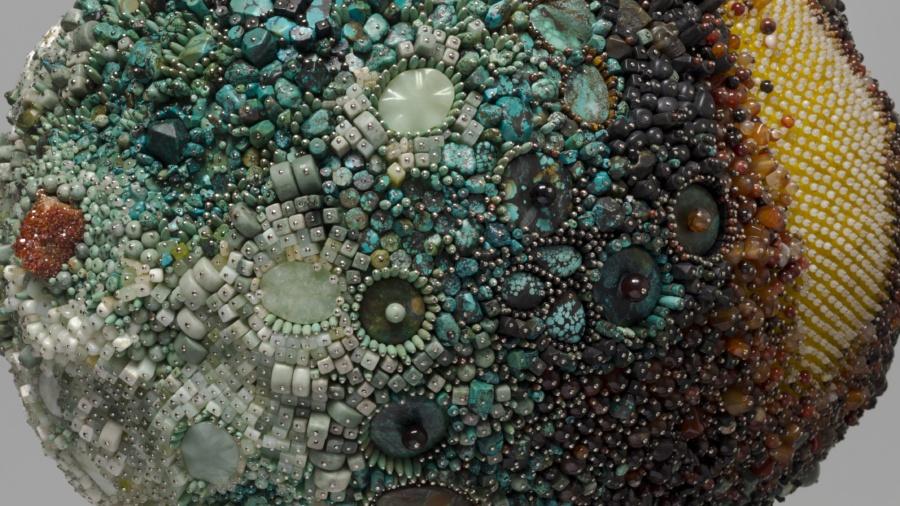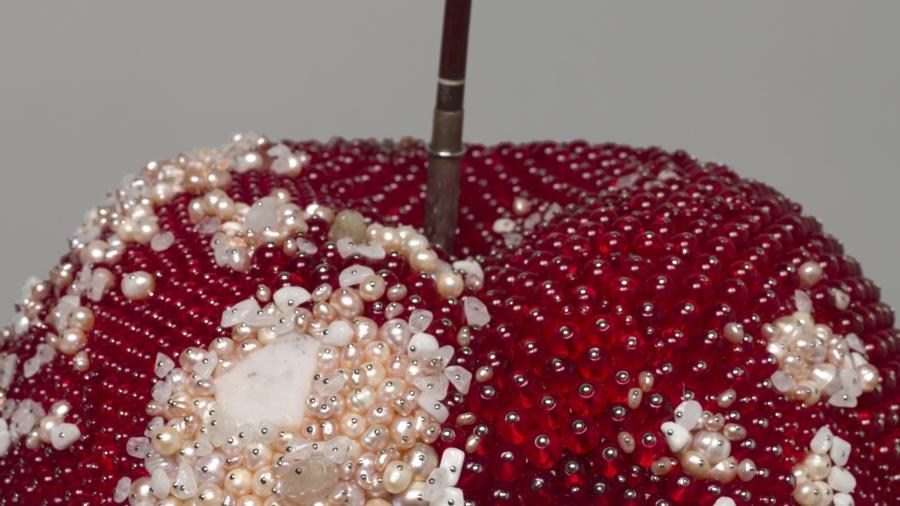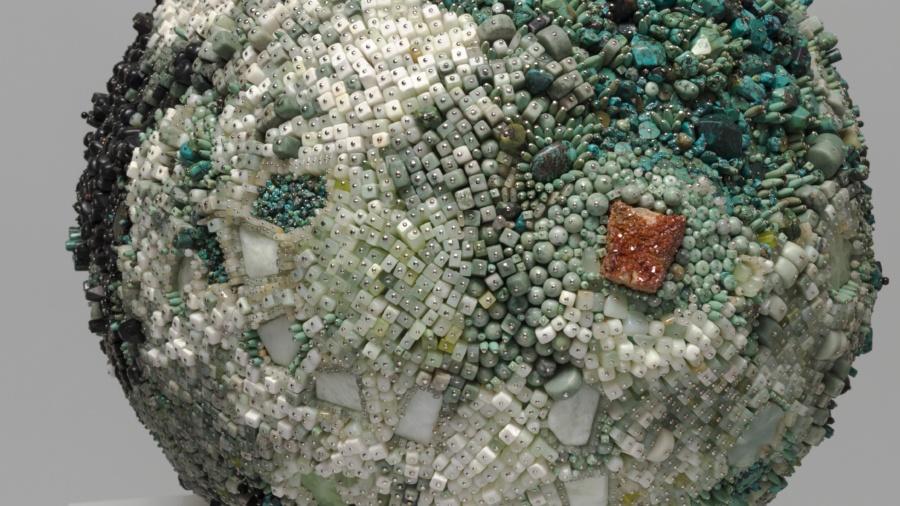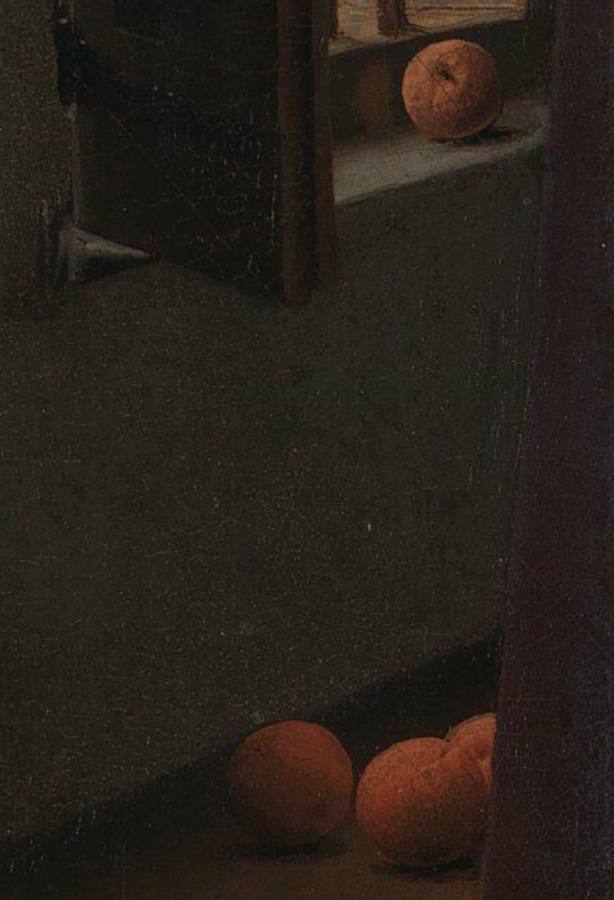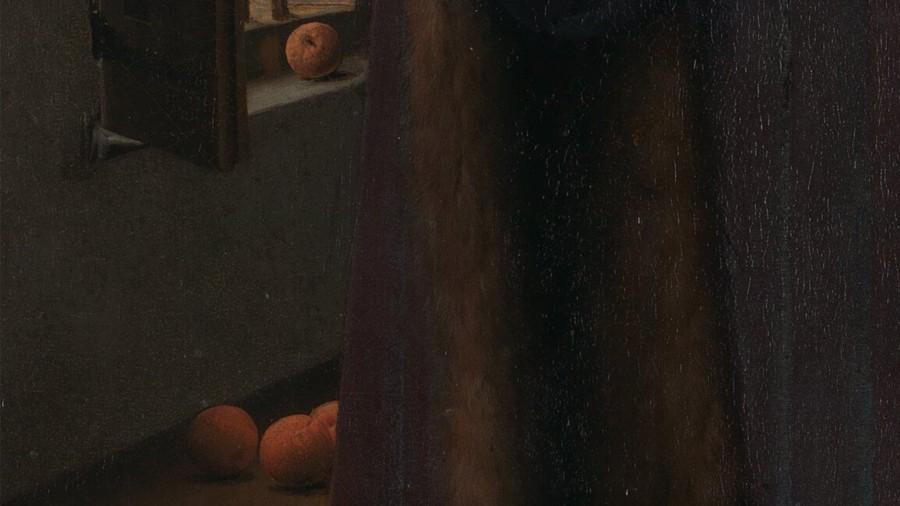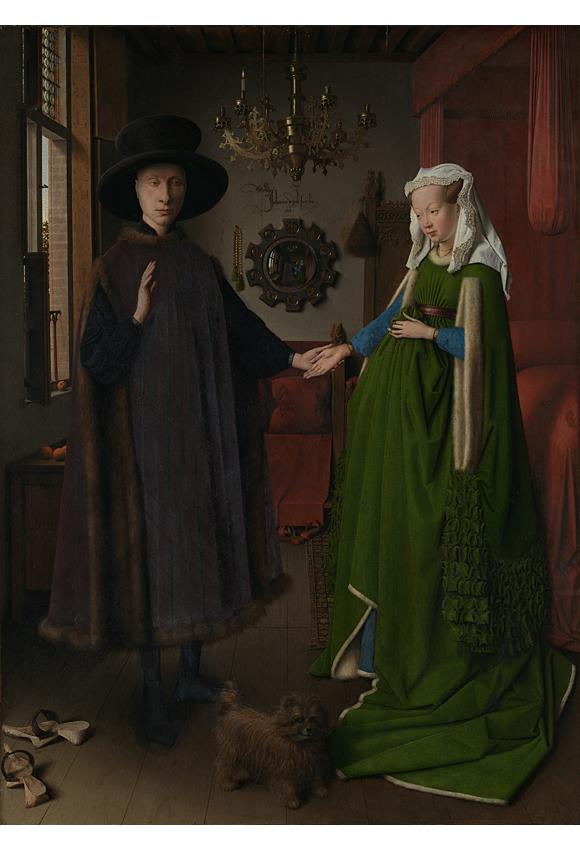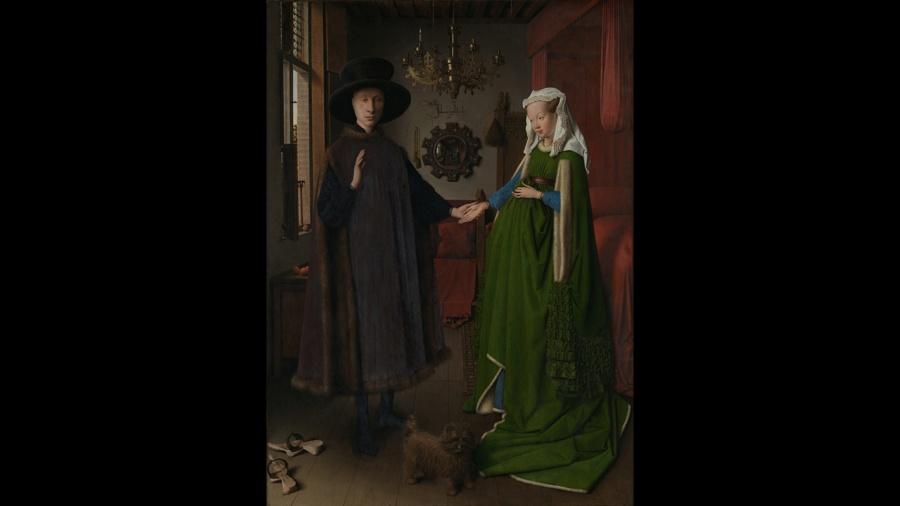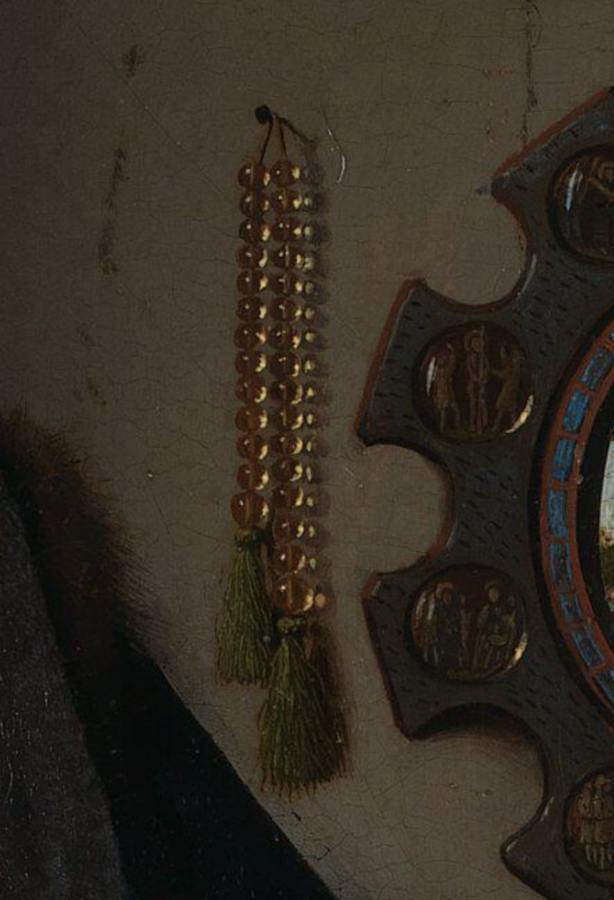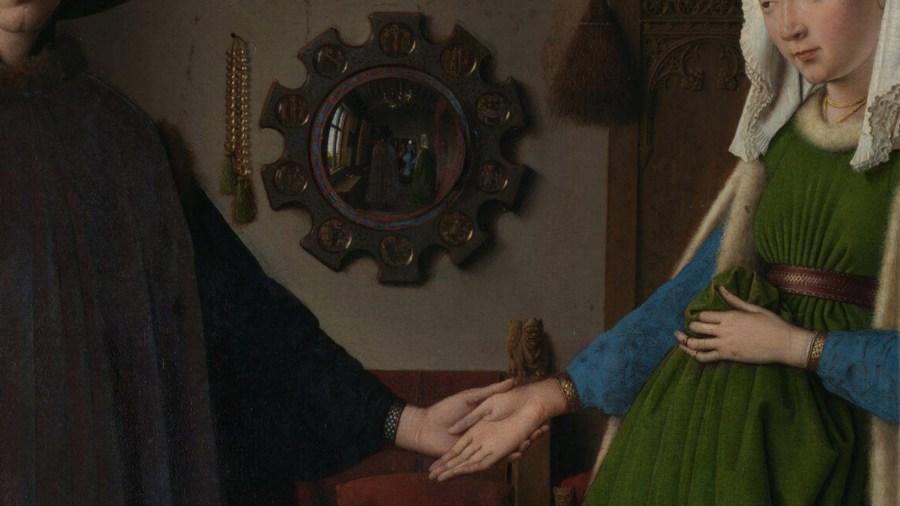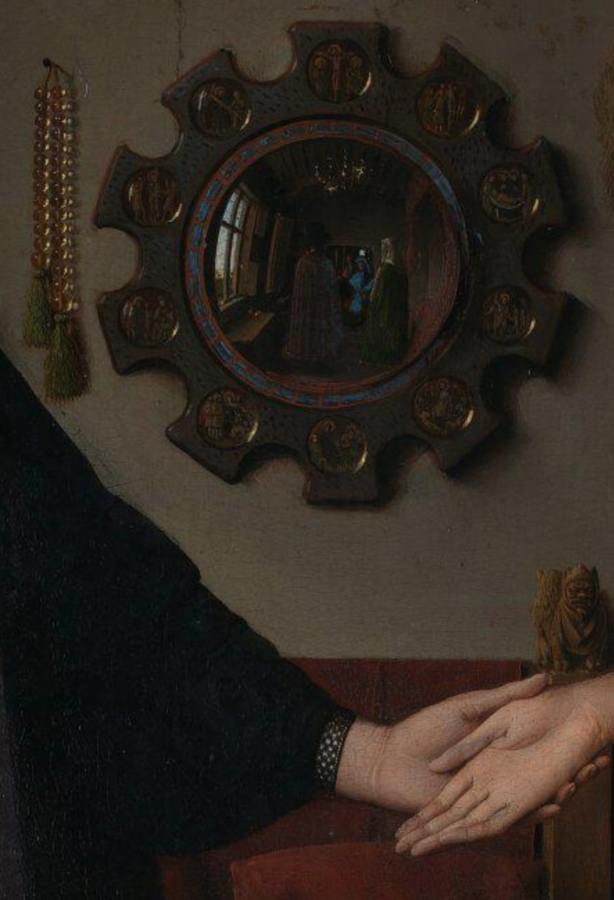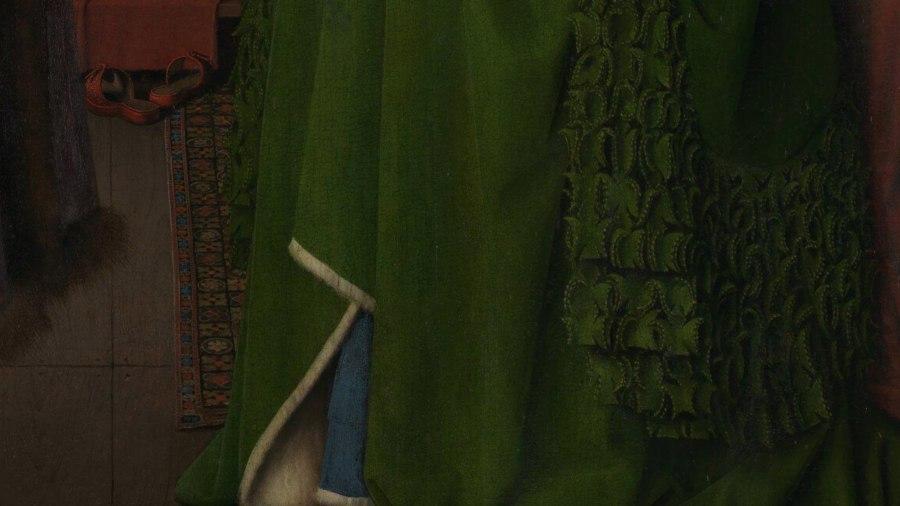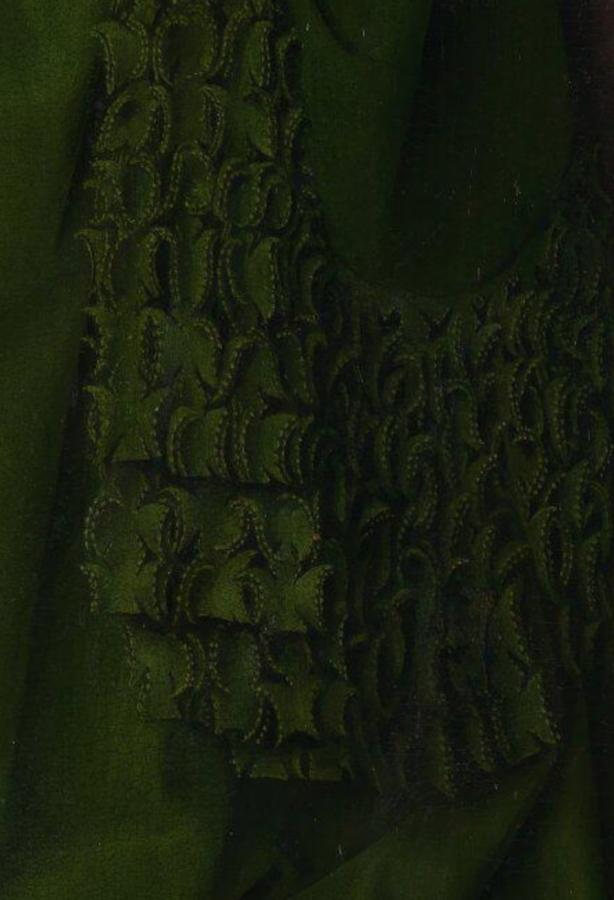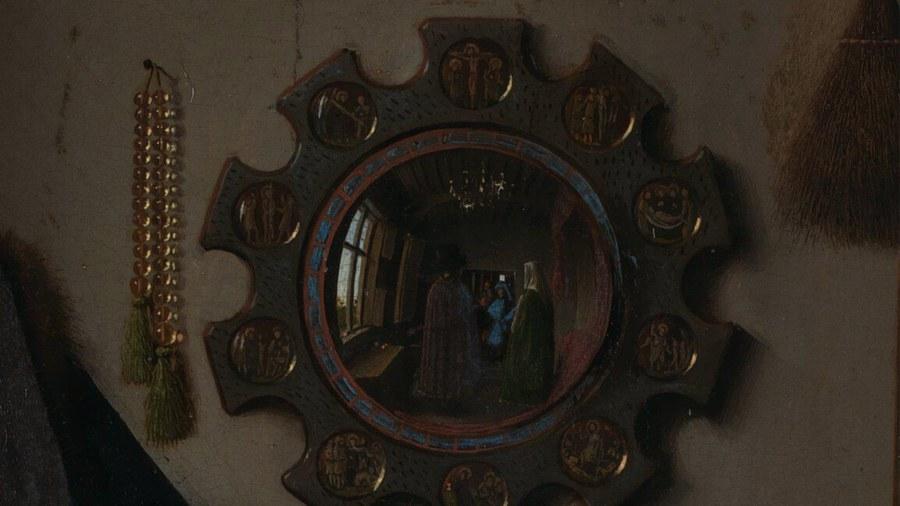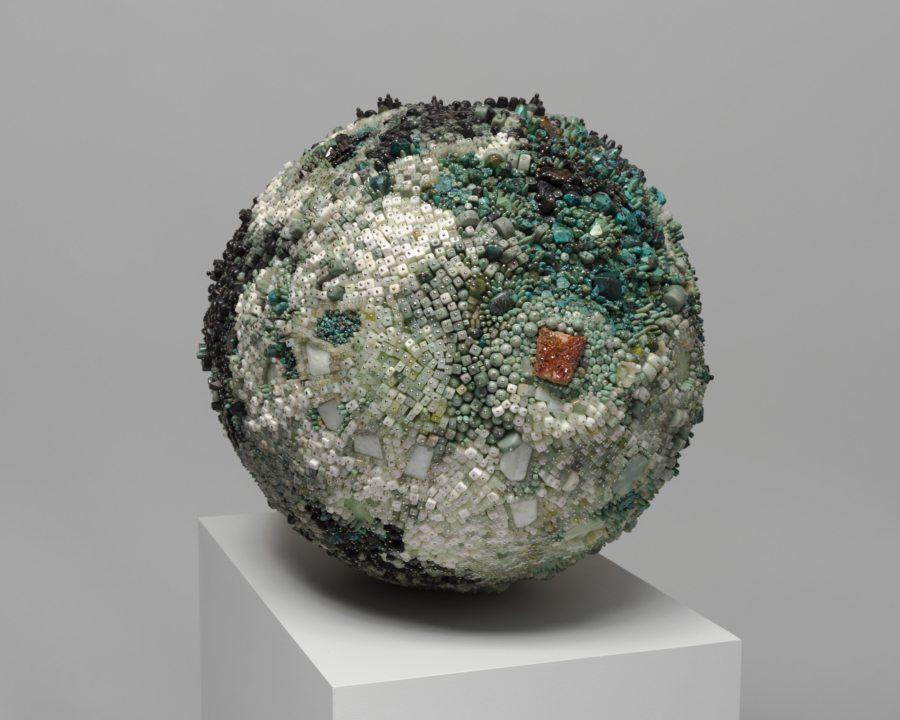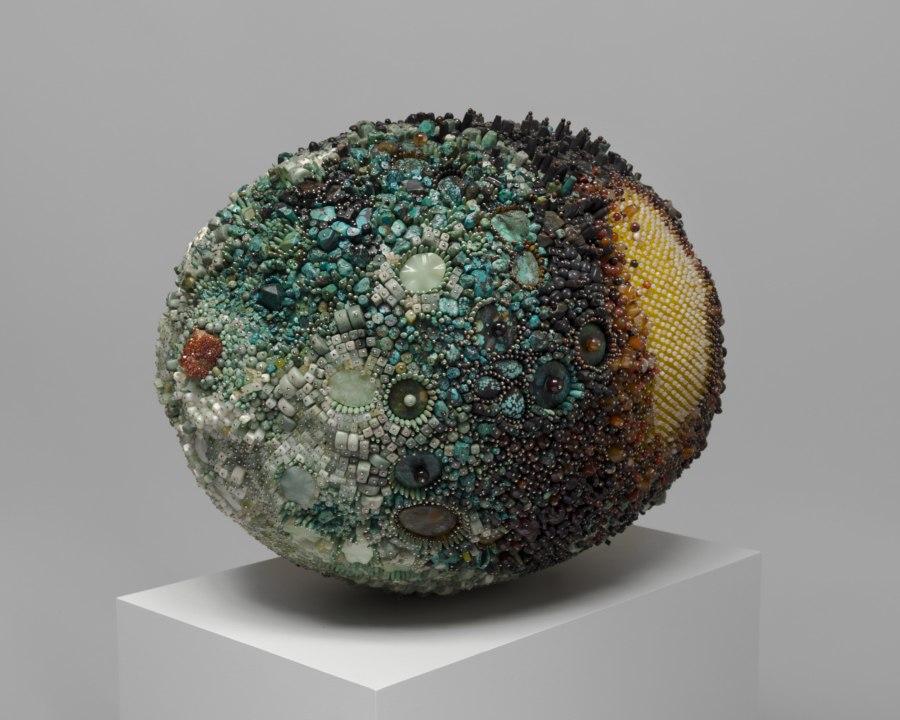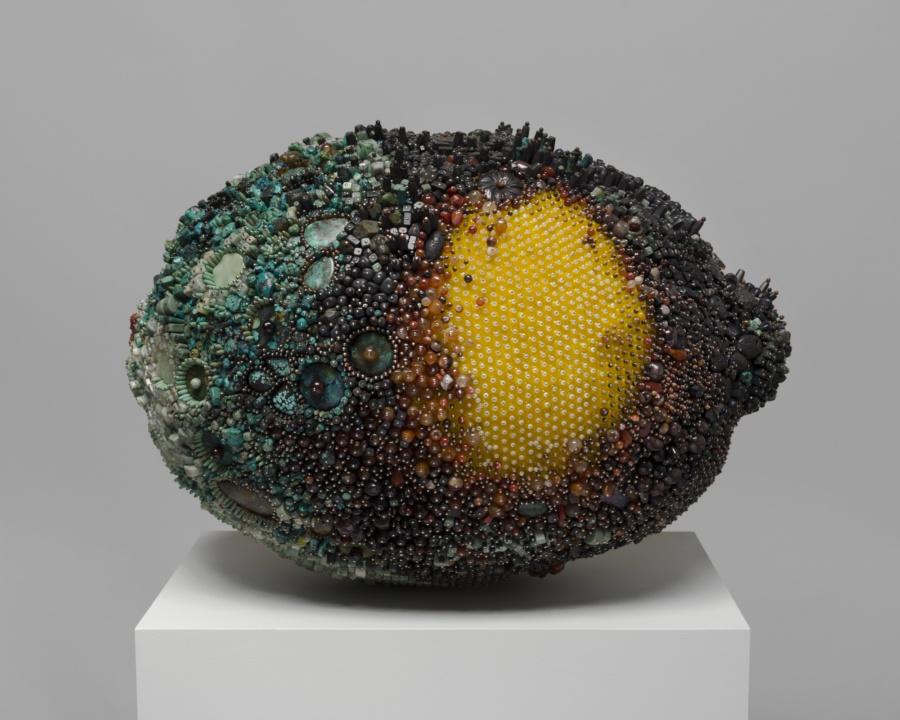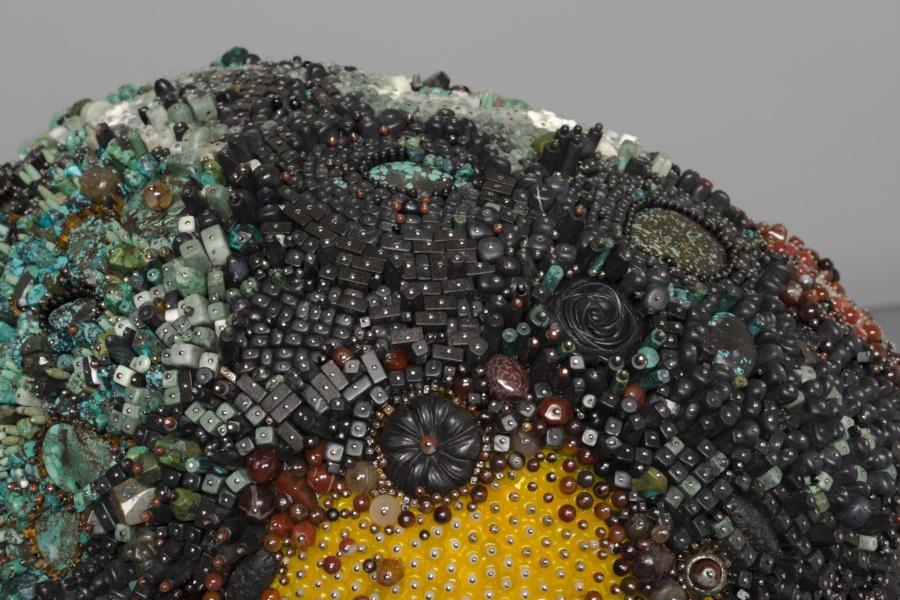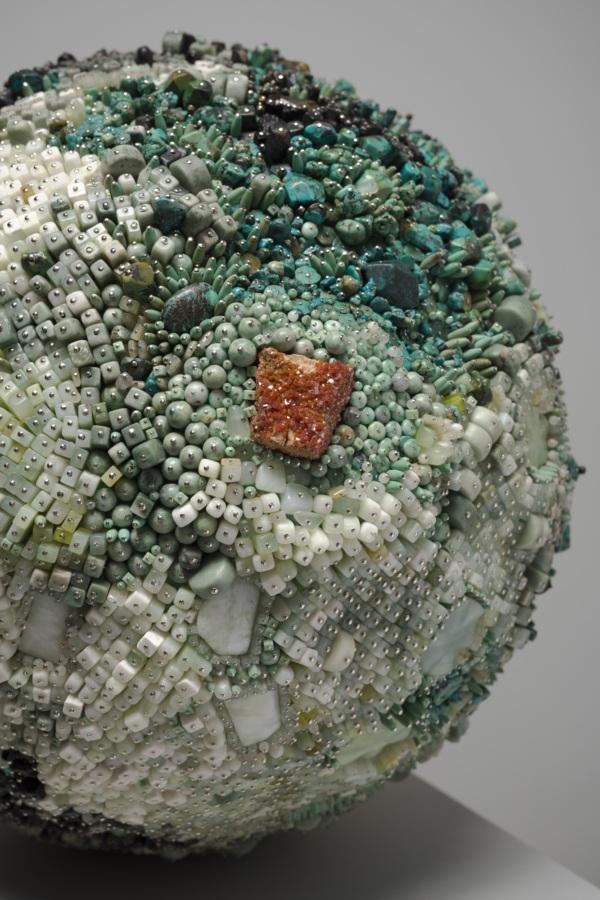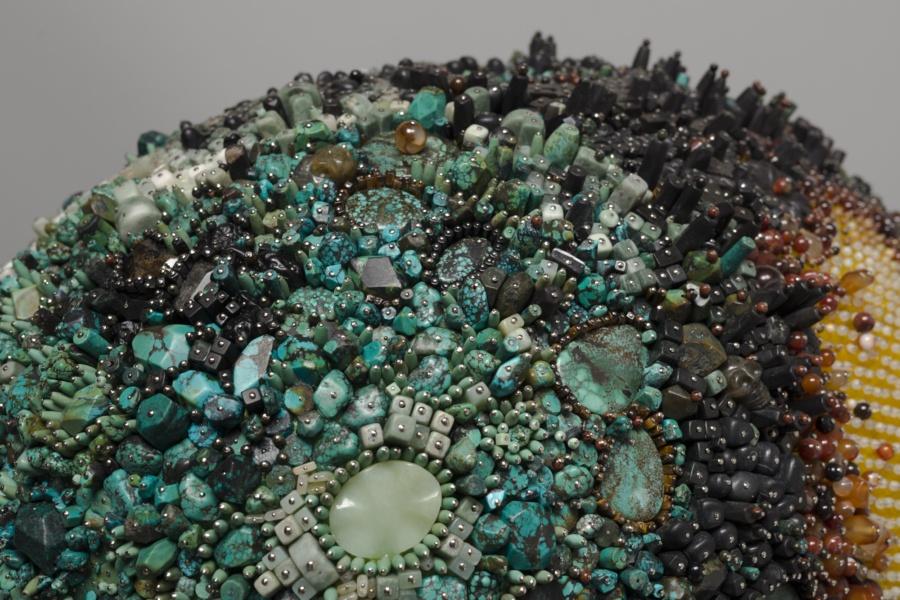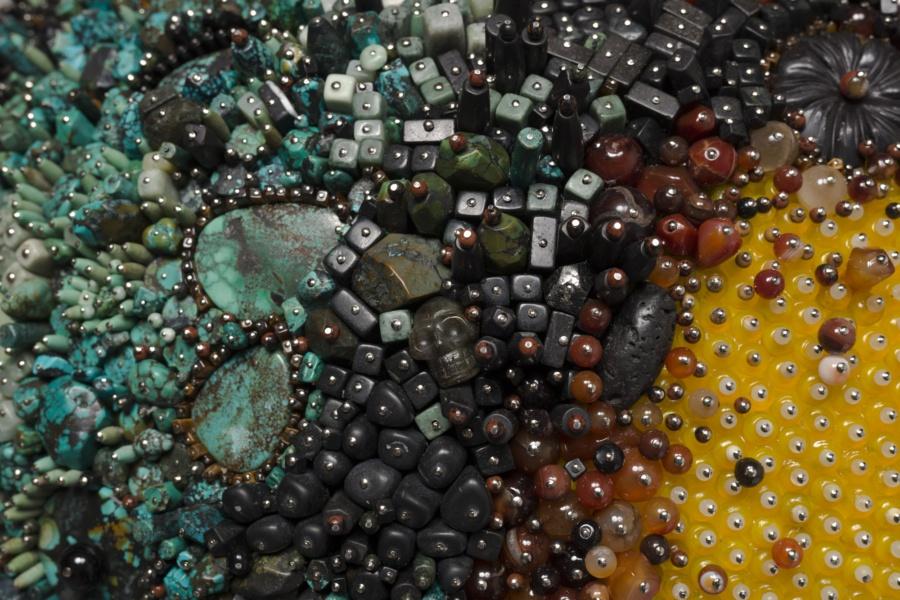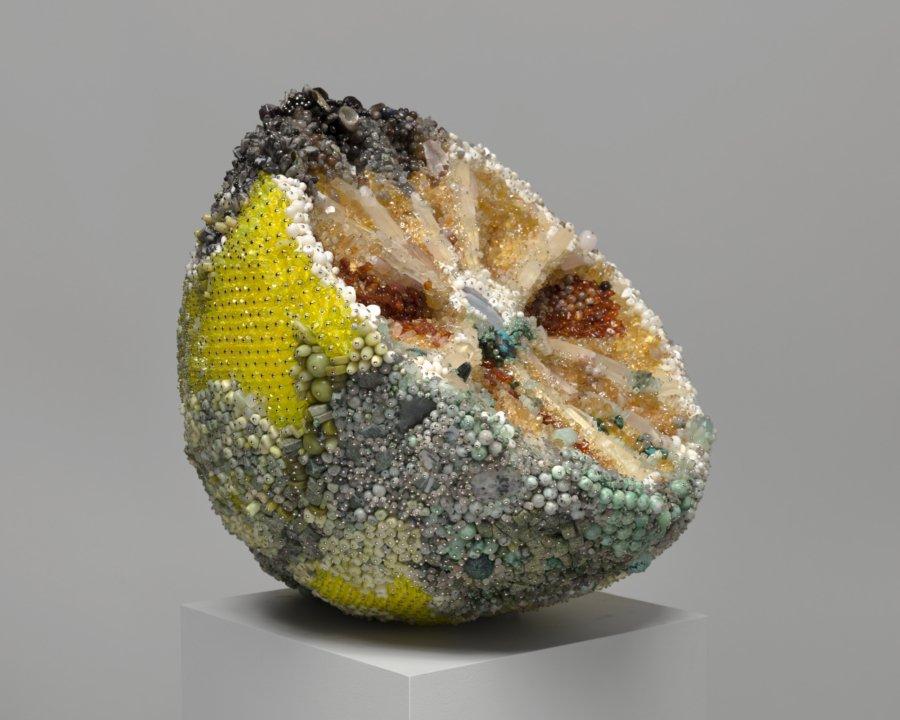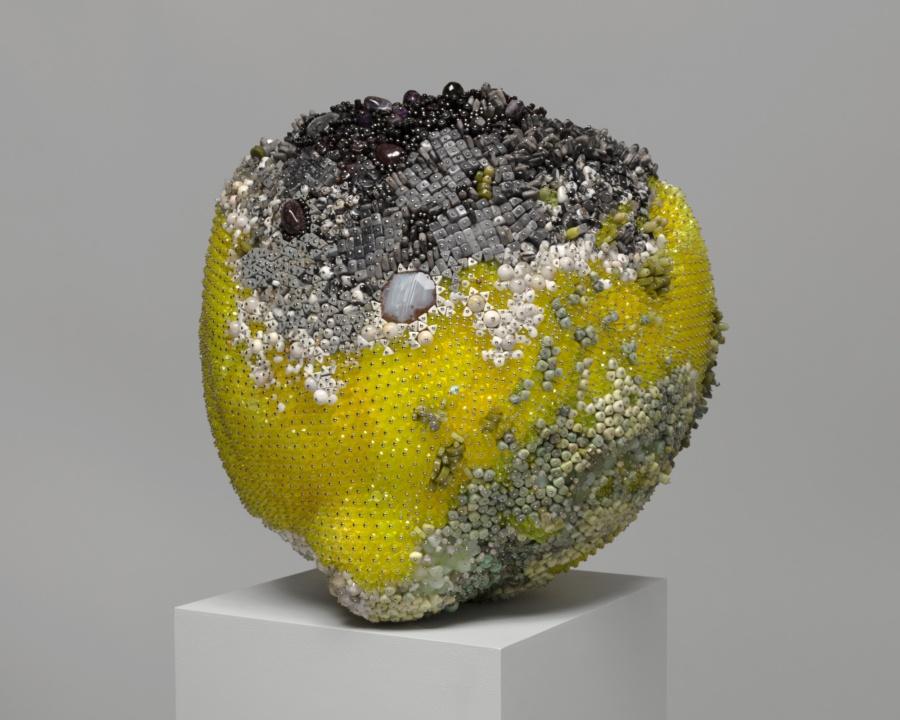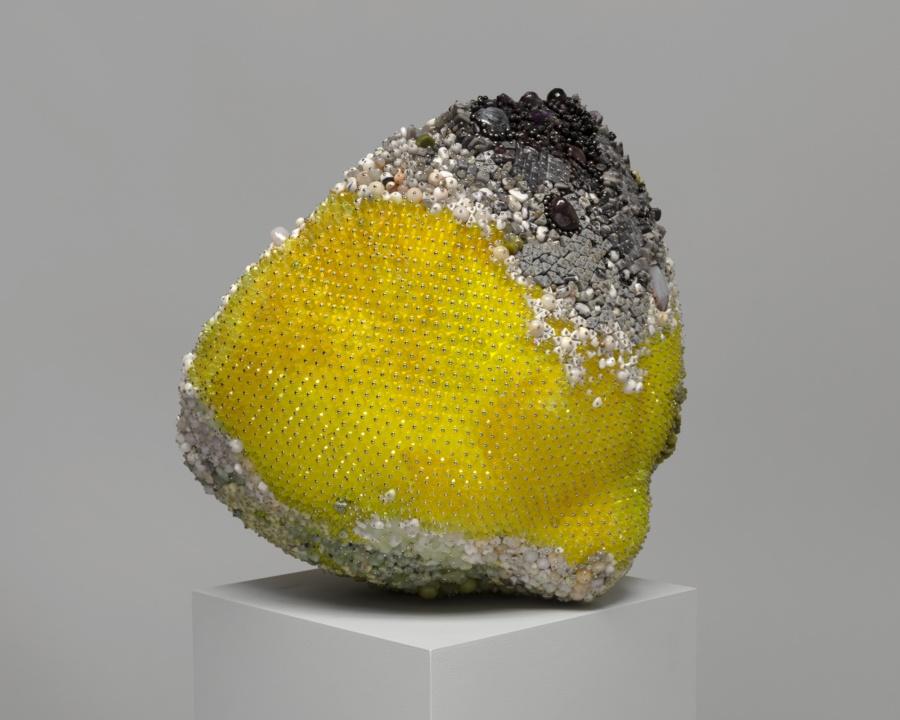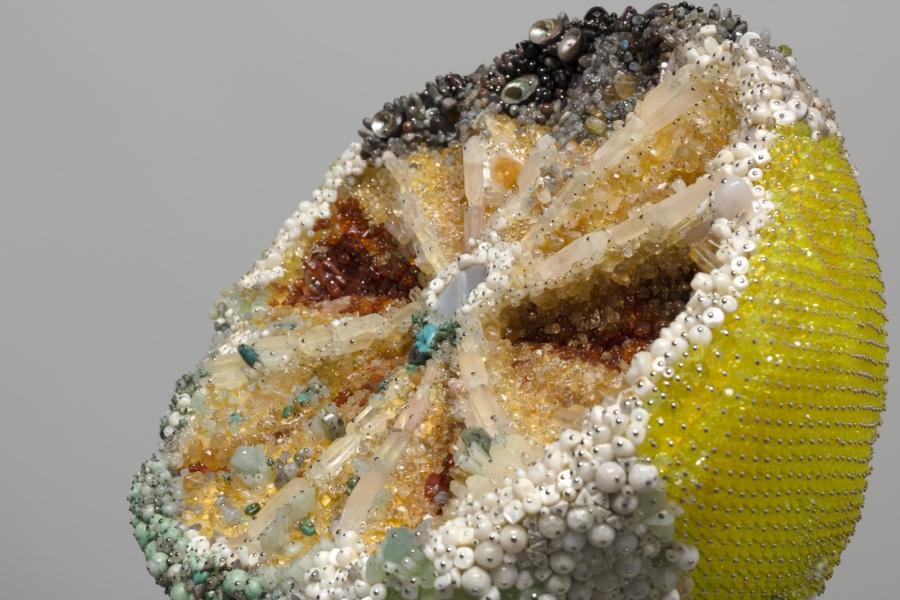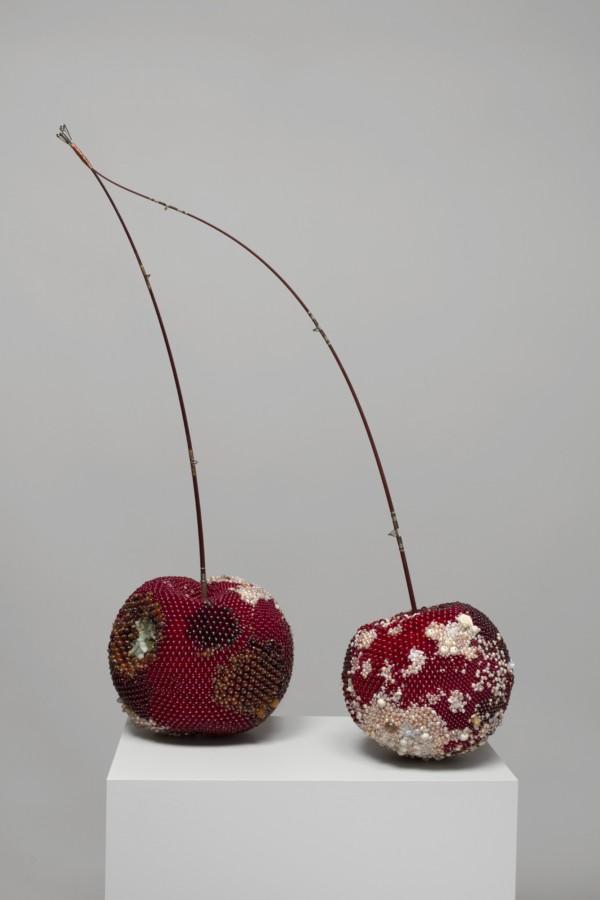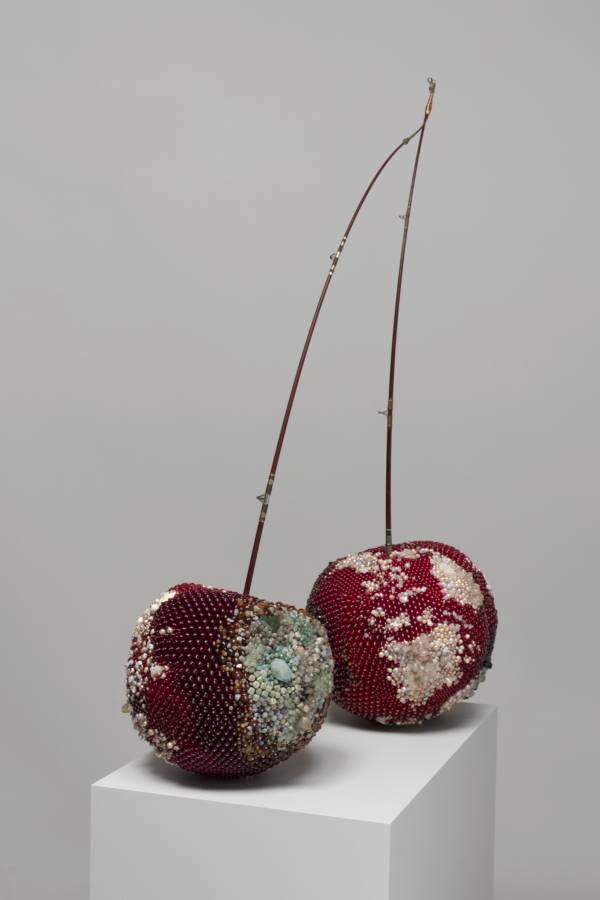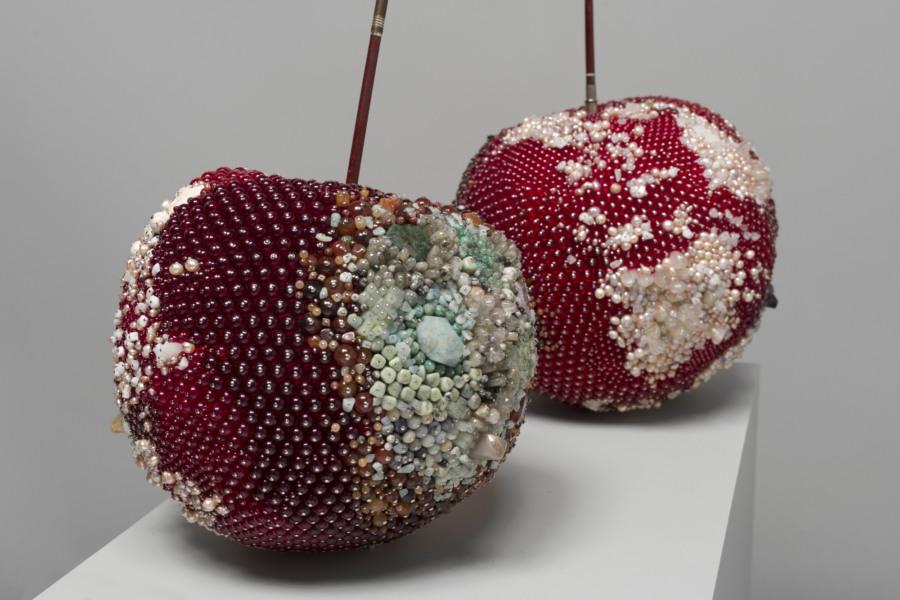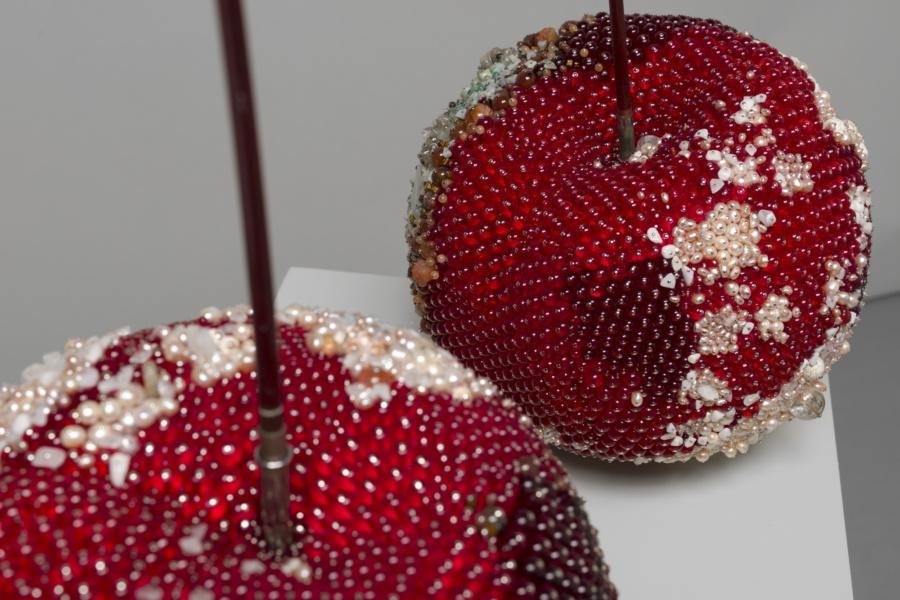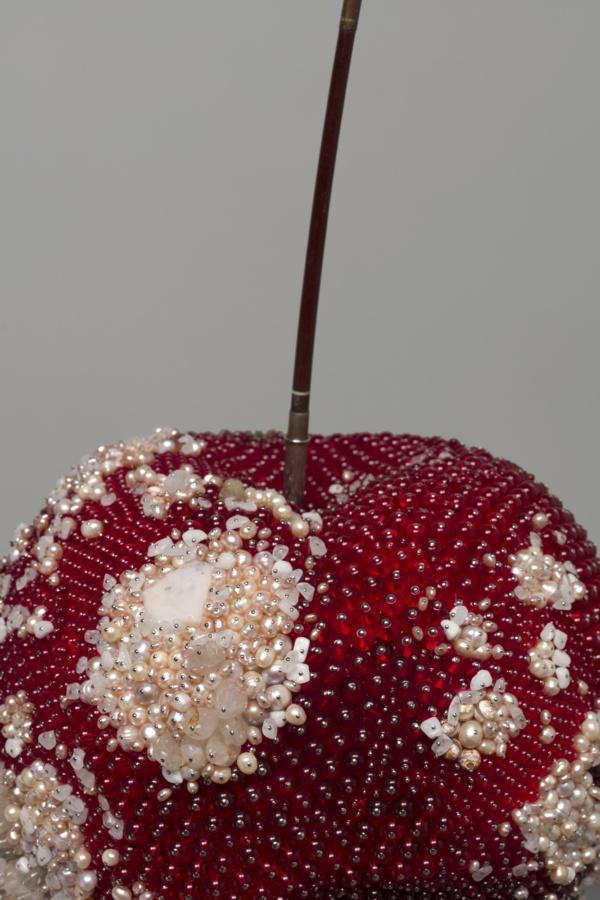Bad Lemon (Persephone), 2020 (detail)
Bad Cherries (BFF), 2020 (detail)
Bad Lemon (Tart), 2020 (detail)
Bad Cherries (BFF), 2020 (detail)
Bad Lemon (Tart), 2020 (detail)
Bad Cherries (BFF), 2020 (detail)
Bad Cherries (BFF), 2020 (detail)
Bad Lemon (Tart), 2020 (detail)
Bad Lemon (Tart), 2020 (detail)
Bad Lemon (Persephone), 2020 (detail)
by Jenelle PorterKATHLEEN RYAN: ROT
by Jenelle Porter
Kathleen Ryan makes sculpture that incorporates, among other materials, collected objects: pink bowling balls, an Airstream trailer, fishing poles, and even granite mounts for industrial machinery. Seeking and collecting objects is fundamental to how her artwork comes to be. One such object she has collected for years is beaded fruit, specifically pin-beaded styrofoam-core fruits, a craft hobby popular in America from the 1940s through 1970s, which Ryan has amassed through thrift store and Internet quests. These funky keepsakes are central to the sculptures Ryan has made during the last two years: scaled-up fruits encrusted with glass beads and gemstones.
Ryan carves styrofoam into fruit shapes that range from 17 to 21 inches in diameter—large enough to be “ridiculously excessive,” the artist explains. Unlike the small, mimetically dewy fruits made by hobbyists, Ryan’s recent sculptures of lemons and cherries are massive and moldering. The “rind” of yellow glass beads decays to semi-precious gemstone “rot” in discoloring hues of white, gray, rust, burgundy, black, and those soft matte greens reminiscent of Arts and Crafts pottery. The exquisite green mold is Penicillium italicum, a species of fungi that transforms citrus from firm and juicy to desiccated and flaccid. Various other members of the genus produce the molecule penicillin. Penicillin! I submit that given the global coronavirus pandemic, raging as I write, and the charged symbolic implications of life and art during these months of social unrest, that the exploration of signs and symbols in Ryan’s work is top of mind. Therefore…
Jan van Eyck, The Arnolfini Portrait, 1434 (detail). © The National Gallery, London
Jan van Eyck, The Arnolfini Portrait, 1434. © The National Gallery, London
Jan van Eyck, The Arnolfini Portrait, 1434 (detail). © The National Gallery, London
Jan van Eyck, The Arnolfini Portrait, 1434 (detail). © The National Gallery, London
Jan van Eyck, The Arnolfini Portrait, 1434 (detail). © The National Gallery, London
The conceptual operation of these sculptures is deceptively simple. Ryan’s fading fruit evokes the tradition of European vanitas painting and its representational systems that relied so much on a purportedly shared lexicon of culture, economy, and human nature. I am one of those art history students of a certain age whose worldview was vastly enlarged when I learned, courtesy of Jan van Eyck’s Arnolfini Portrait (1434), that oranges symbolized vitality and wealth in 15th century Holland. There it was: wealth, privilege, gender roles, all in an arrangement of oranges. At the other end of this timeline—now—lemons and cherries are oft-used emojis representing sour and/or sexually suggestive sentiments. In other words, what Ryan attempts in this body of work isn’t simple by half. Fruit represents. A lemon might symbolize longevity, friendship, purity, bitterness, disappointment—or a persistently defective car. The dark red flesh and juice of a cherry symbolize sex and virginity; in Japanese culture, it is the warrior’s blood and self-sacrifice. In Christianity, cherries represent, in the hands of baby Jesus, paradise.
Ryan augments fruit symbolism in visual culture by surfacing her sculptures with dense accumulations of naturally occurring gemstones. Gemstones and minerals are available for infinite interpretation; pick your information source and you’ll find readings that align with your worldview. Mine, today, is the state of the world, or shall I say, my world and my mood. By way of explanation, gemstones and crystals are often implemented in natural healing, which I ascribe to (and damn I miss my acupuncturist during this social-distance lockdown). The stones Ryan uses are industrially manufactured for jewelry and décor, with center holes for threading. She uses variously-sized faceted stones; stones cut into spheres, cubes, and tetrahedrons; stones carved into shapes, for example, blossoms; as well as raw rocks and seashells. The variation of surface and color is dazzling, decadently excessive, indulgently detailed—precisely how I would characterize the symbolic scope of rot. But somehow, Ryan’s sculptures maintain their ordinariness: fruit and rocks, just some stuff from nature, mined from the earth or bought from the hobby store. The artist succinctly describes her approach as “using the wrong parts”: precious, dazzling stones for rot, ordinary glass beads for pristine rind.
The gemstones that encrust Ryan’s lemons include: citrine, amber, agate, turquoise, fluorite, prehnite, magnesite, Ching Hai Jade (a trade name for a naturally occurring combination of dolomite and fuschite), quartz, amethyst, garnet, labradorite, serpentine, sesame jasper, zebra jasper, grey feldspar, marble, smoky quartz, tiger eye, carnelian, garnet, pyrite, black stone, aventurine, Italian onyx, and mahogany obsidian. The cherries include elements of the above list plus, from the sea, freshwater pearl. Onyx can help you rebuild vitality after a prolonged illness. Aventurine will help you maintain energy and optimism in challenging times. Carnelian can boost your willpower. Tiger eye (really staring at me right now) will shore up resilience in overwhelming situations. Jaspers and quartzes have grounding and stabilizing effects. Amber is nurturing; turquoise can help you speak your truth with clarity; fluorite and amethyst clear confusion; prehnite offers relief from anxiety. Serpentine, the one society needs now, emanates the energy required for transformation. (At this point, doesn’t everyone need a personal perimeter of healing stones?) Ryan depicts decay with the very materials that can, if you exercise your powers of magical thinking, reverse the rot.
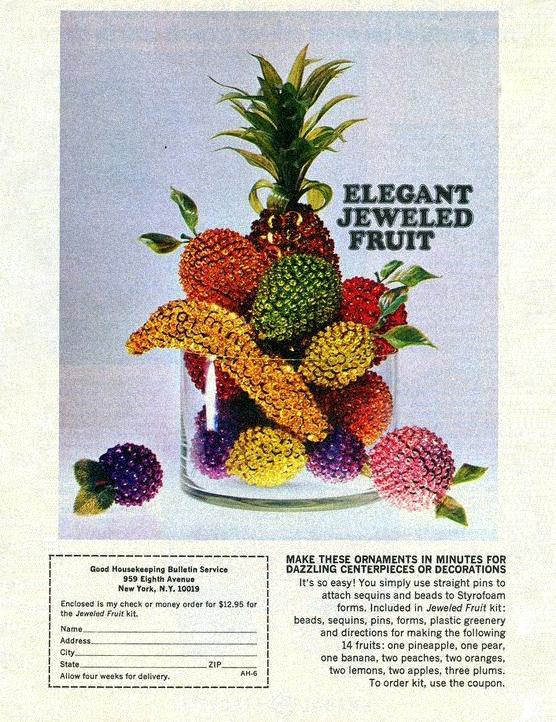
Advertisement from Good Housekeeping, c. 1970s
Folk art, kitsch, decoration, and craft are intrinsically bound up in Ryan’s sculptures. She did graduate work in ceramics at the University of California, Los Angeles, and I see in her work material and conceptual connections with Adrian Saxe (who taught in the Department of Art for decades), as well as other artists whose work collapses categories of all sorts such as Nick Cave, Jeffrey Gibson, Liz Larner, and Ebony G. Patterson, to name only a few. Categories are both ever-changing and evergreen, merely guidelines to engage and resist. They are also fraught. Taking up the language and histories of craft might be considered appropriative by some; by others, homage. This double bind seeps from the seams of Ryan’s work in the ways it celebrates and complicates everyday objects (especially those considered “Americana”), from those found on eBay, to those displayed on the kitchen counter, to those mined from the earth. A case in point: for the cherry “stems,” Ryan uses vintage fishing poles in order to catch out the histories and myths that construct our present. (Cherries: George Washington; fishing: Huck Finn, Jesus Christ, et cetera. I’m having a founding-fathers-teach-a-man-to-fish-and-walk-on-water vibe. Strange fruit, indeed.) Freedom, equality? These are a few of the many valences along which memorabilia maneuvers: one era’s symbols might be another’s shame. These evolving histories and myths summon us, in the present, to reevaluate and reframe their meaning. Allow me to circle back. Who defines the categories, the merits, the value of art or craft? The history, or the story? I look to artists who find ways to transform objects and ideas to make works of art that wade into the future while dragging along the past.
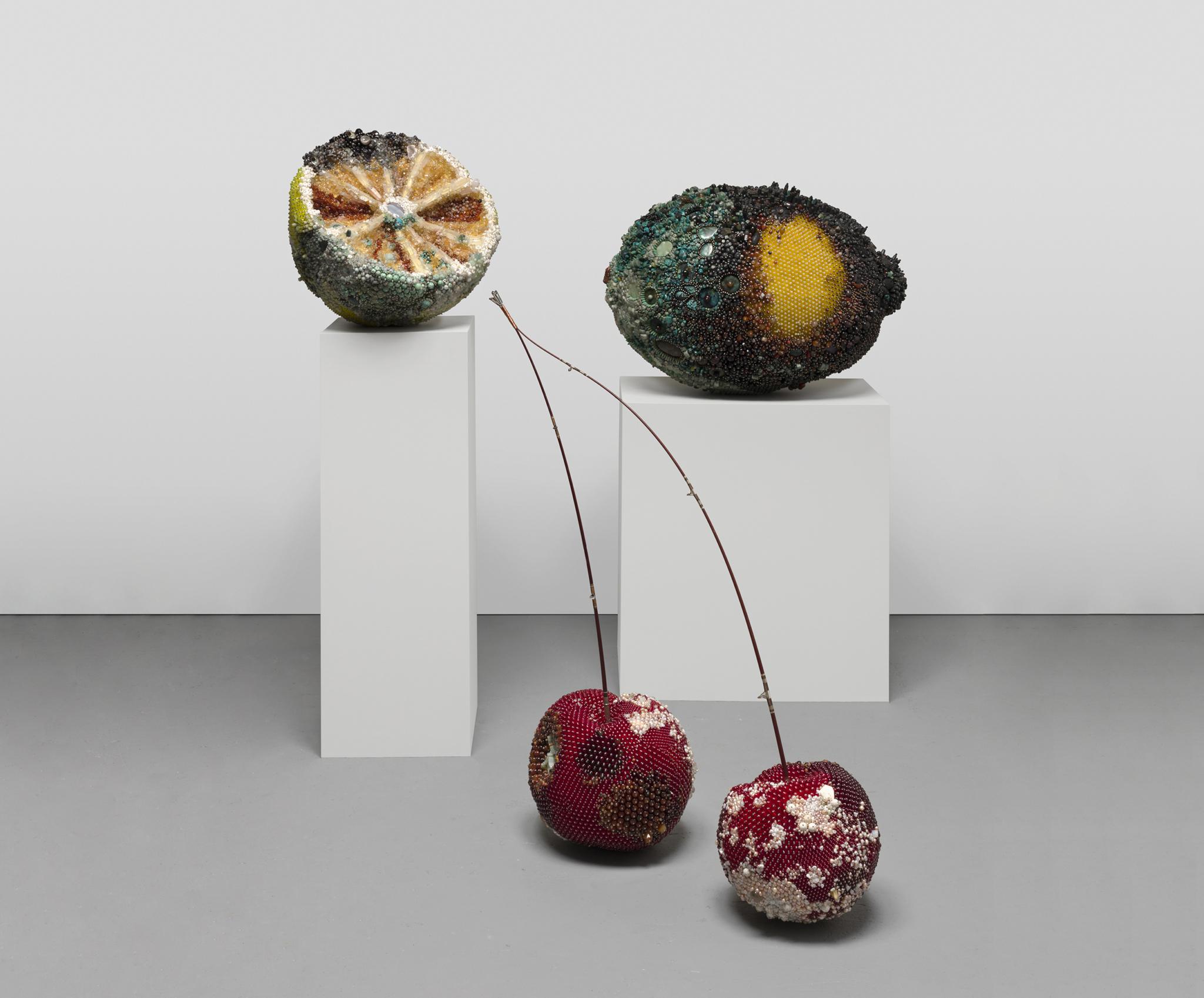
Bad Lemon (Tart), 2020, Bad Lemon (Persephone), 2020, Bad Cherries (BFF), 2020
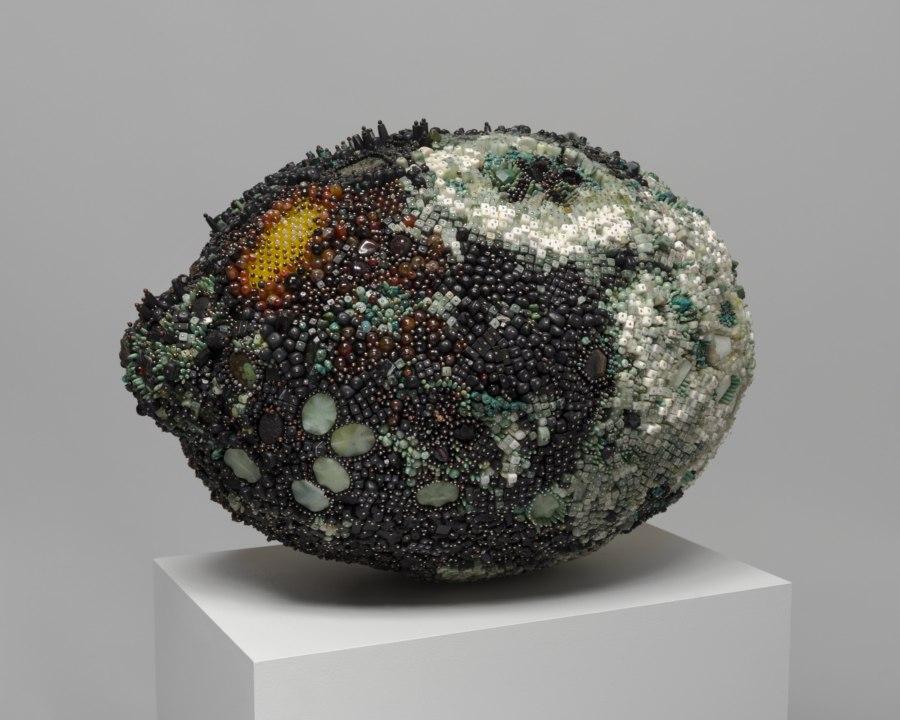
Kathleen Ryan
Bad Lemon (Persephone), 2020
Turquoise, serpentine, agate, smokey quartz, labradorite, tiger eye, tektite, zebra jasper, carnelian, garnet, pyrite, black stone, magnesite, Ching Hai jade, aventurine, italian onyx, mahogany obsidian, vanadinite, glass, steel pins on coated polystyrene
19½ × 28½ × 18 inches; 49.5 × 72.4 × 45.7 cm
KR-20-002
Kathleen Ryan
Bad Lemon (Persephone), 2020
Turquoise, serpentine, agate, smokey quartz, labradorite, tiger eye, tektite, zebra jasper, carnelian, garnet, pyrite, black stone, magnesite, Ching Hai jade, aventurine, italian onyx, mahogany obsidian, vanadinite, glass, steel pins on coated polystyrene
19½ × 28½ × 18 inches; 49.5 × 72.4 × 45.7 cm
KR-20-002
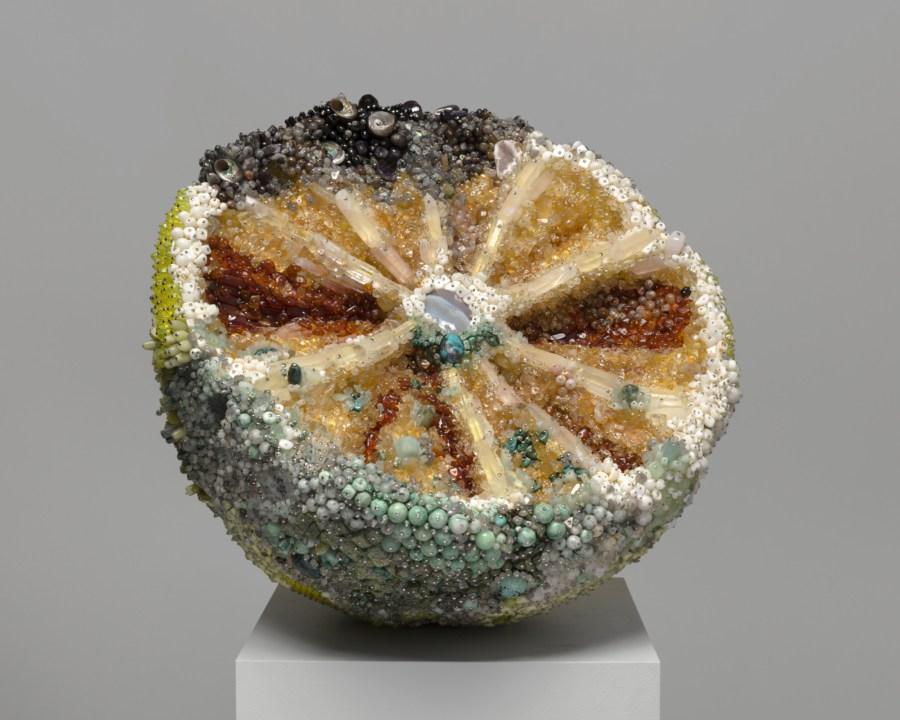
Kathleen Ryan
Bad Lemon (Tart), 2020
Citrine, amber, agate, turquoise, fluorite, prehnite, magnesite, Ching Hai jade, quartz, amethyst, garnet, labradorite, white lip shell, serpentine, sesame jasper, zebra jasper, grey feldspar, marble, glass, steel pins on coated polystyrene
19 × 16 × 17 inches; 48.3 × 40.6 × 43.2 cm
KR-20-003
Kathleen Ryan
Bad Lemon (Tart), 2020
Citrine, amber, agate, turquoise, fluorite, prehnite, magnesite, Ching Hai jade, quartz, amethyst, garnet, labradorite, white lip shell, serpentine, sesame jasper, zebra jasper, grey feldspar, marble, glass, steel pins on coated polystyrene
19 × 16 × 17 inches; 48.3 × 40.6 × 43.2 cm
KR-20-003
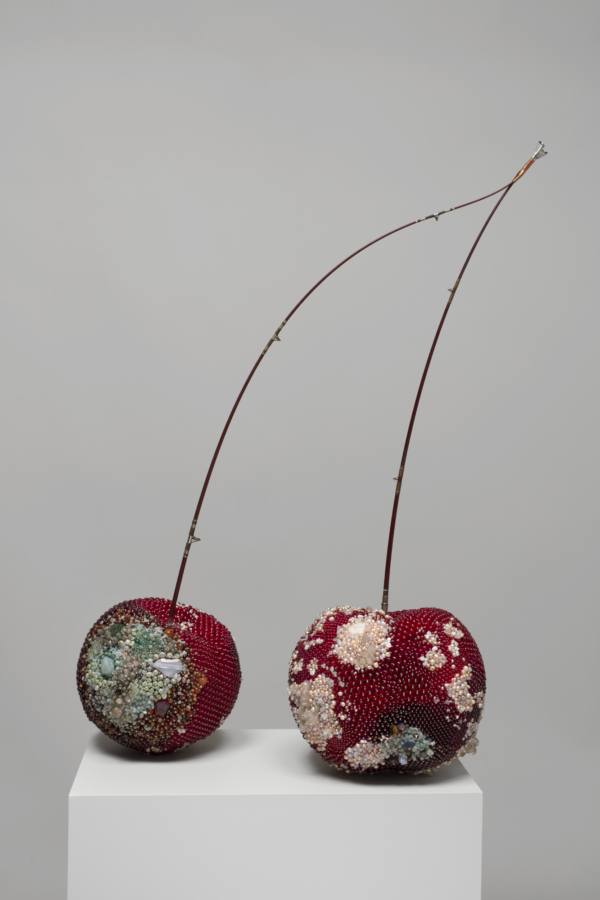
Kathleen Ryan
Bad Cherries (BFF), 2020
Agate, amazonite, aquamarine, aventurine, amethyst, angelite, brecciaded jasper, garnet, jasper, labradorite, magnesite, moonstone, quartz, red aventurine, rhyolite, serpentine, snow quartz, smoky quartz, spotted quartz, unakite, tiger eye, freshwater pearls, glass, steel pins on coated polystyrene, fishing poles
26 × 12 × 39 inches; 66 × 30.5 × 99.1 cm
KR-20-004
Kathleen Ryan
Bad Cherries (BFF), 2020
Agate, amazonite, aquamarine, aventurine, amethyst, angelite, brecciaded jasper, garnet, jasper, labradorite, magnesite, moonstone, quartz, red aventurine, rhyolite, serpentine, snow quartz, smoky quartz, spotted quartz, unakite, tiger eye, freshwater pearls, glass, steel pins on coated polystyrene, fishing poles
26 × 12 × 39 inches; 66 × 30.5 × 99.1 cm
KR-20-004
